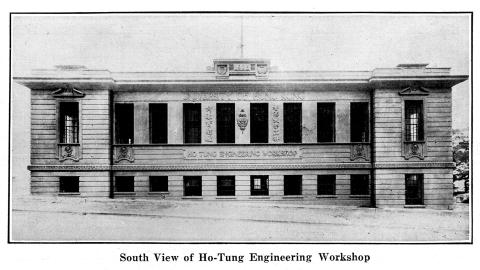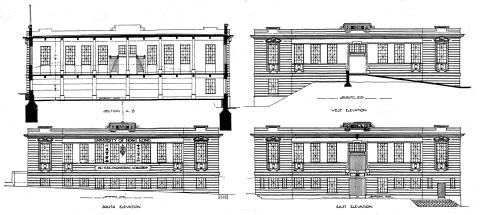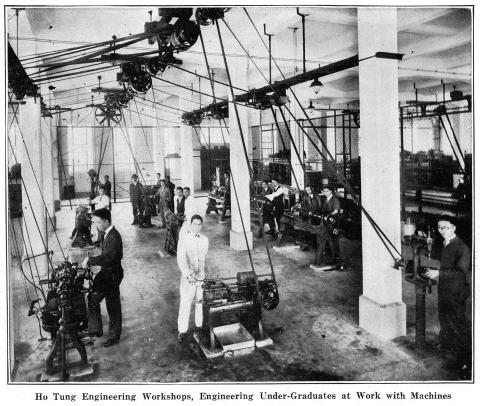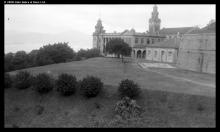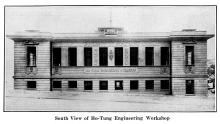Shortly after the opening of the University of Hong Kong in 1912, Sir Robert Ho-Tung made a donation of $100,000 to the university for the purpose of providing an engineering machine shop for training of engineering students. The first small workshop, which was built on 1914, was located very close to the main campus building. The noise from the workshop of hammering and noisy machines led to the professors and lecturers complaining and begging for the noise to be abated.
The solution to the noise problem was solved by the acquisition of land on Pokfulam Road on which a new two-storey building 400ft by 100 ft was built. An open sea view ensured sea breezes adequately ventilated the building which was completed in 1925. The architects were Leigh & Orange and the building contractor Lam, Woo & Co.
The main workshop contained nine lathes , shaping machines, drilling machines and the repair shop contained milling and planning machines , grinders, sawing machines and pipe screwing machines etc.
The practice of providing “on-hands” training and experience for university students was by no means universal in those days. This idea was still quite novel. The University of Cambridge did not expect its engineering lecturers to get their hands soiled teaching students dirty, manual jobs like this. If they felt it necessary to acquire these skills they had to make their own arrangements with engineering companies. However, Confucius said “The essence of knowledge is having to apply it”, so this being in Hong Kong, engineering students at HKU in the 1920s -1930s did “hands-on” experience when taking engineering studies. ( Do they still do so? )
Hong Kong said goodbye to this building when it was demolished in the late 1980s. I still remember with nostalgia going past this building on buses and just for a few fleeting seconds, while rounding the sharp bend in the road, could spot the lathes (obviously more modern replacements) through the large open windows.
These pictures and information are derived from the May 1927 edition of The Far Eastern Economic Review .(P. A. Crush Chinese Railway Collection)
